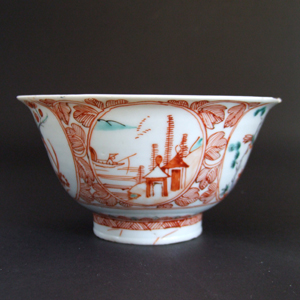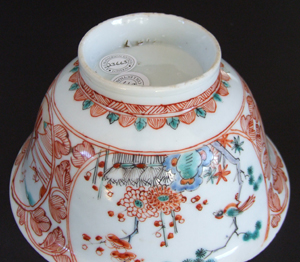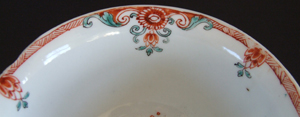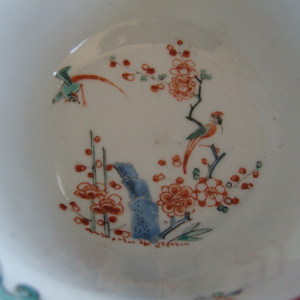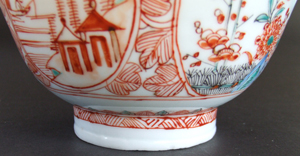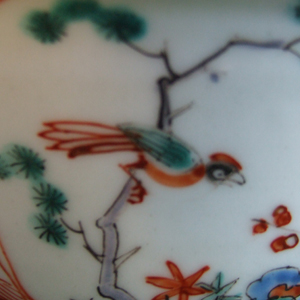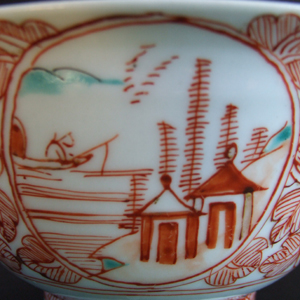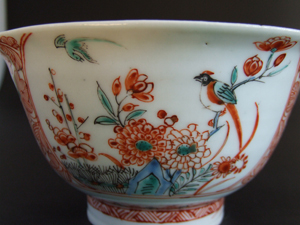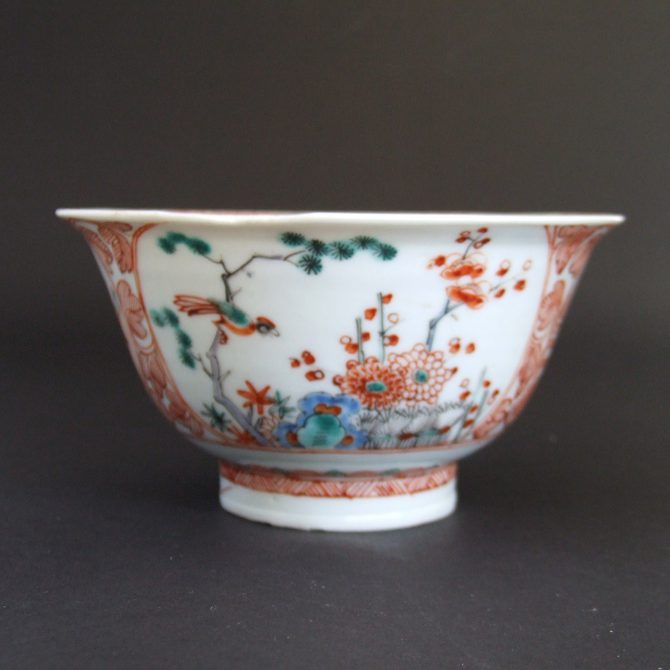
KANGXI 1662 – 1722 Dutch Decorated Blanc de Chine Porcelain
A Rare Dutch Decorated Fujian Porcelain or Blanc de Chine Porcelain Bowl, Dehua Kilns, Fujian Province, Kangxi 1662-1722. The Dutch Decoration c.1715-1725. Enamelled with a Kakiemon Type Design of `Banded Hedge`, Rocks Flowers and a Bird on a Branch.
Blanc de Chine bowls of this type rarely turn up in Dutch collections. There were a number of Blanc de Chine bowls of graduated sizes recovered from the Vung Tau Cargo (c.1690-1700). However these were of a thicker type of porcelain and would probably have been destined for the South East Asian market after they arrived at Batavia.
SOLD
- Condition
- Large rim chip.
- Size
- Diameter : 15.5 cm (6 inches)
- Provenance
- James Norbury, Portobello Road, 3rd October 1998. The Helen Espir Collection of European Decorated Chinese Export Porcelain : "a member of the Oriental Ceramic Society and collector, with her husband. Having made a typical collection of Song and provincial Ming blue and white, they decided to concentrate on what used to be called `clobbered` porcelain. She is the author of the standard work on the subject, European Decoration on Oriental Porcelain,2005, the first to examine the work of European decorators on Chinese porcelain throughout the eighteenth and nineteenth centuries, focusing on enamellers in Holland, Germany and England. She has learned Chinese." From Provenance ; Collectors, Dealers & Scholars : Chinese Ceramics in Britain & America (Roy Davids, Dominic Jellinek, Privately Printed, 2011. ISBN 978-0-9570148-0-0).
- Stock number
- 23663
Information
Kakiemon Porcelain :
Kakiemon decoration is usually of high quality, often delicate and with well-balanced asymmetric designs. The designs were normally quite sparse emphasizing the fine white porcelain body known in Japan as Nigoshide (milky white). The opaque white milky Nigoshide body was used on the finest pieces, it appears that it was reserved for fine quality enamelled decoration. Kakiemon porcelain was decorated with a great variety of imaginative designs which include elements such as the `banded hedge`, `flying squirrel`, and the `Quail and Millet` design. The `Three Friends of Winter` were also a very popular group of designs, other subject taken from nature include flowers (especially the chrysanthemum, the national flower of Japan) as well as birds and rock-work. Figural subjects such as the `Hob in the Well` were also popular. This design illustrates a Chinese folk tale where a sage saves his friend who has fallen into a large fish-bowl by throwing stones at it, braking open the pot. Banded-Hedges were a formal device within Japanese traditional gardens, they were often incorporated in designs, includes `The Three Friends of Winter` (Pine, Bamboo and Prunus). These three plants signify perseverance, as neither the pine nor the bamboo shed their leaves in winter and the plumb (Prunus) flowers at the very end of the winter, heralding the arrival of spring.
